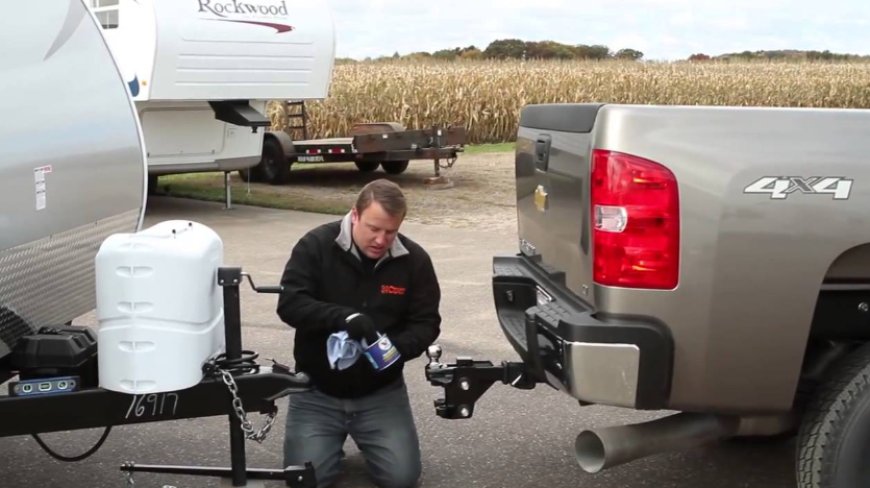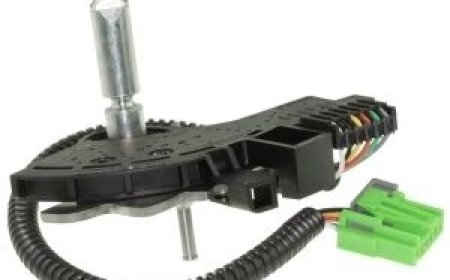How to Safely Load and Balance an Unbraked Trailer
Learn how to safely load and balance an unbraked trailer to a towing vehicle. Follow expert tips to prevent sway, ensure road safety, and tow like a pro.

Towing an unbraked trailer might seem like a simple task hook it up and hit the road, right? Not quite. When it comes to safety, proper loading and weight distribution are just as important as the towing connection itself. Whether you're hauling camping gear, landscaping tools, or helping a friend move, knowing how to safely load and balance an unbraked trailer to a towing vehicle is essential.
Unbraked trailers dont have their braking systems, so all the stopping power relies on your towing vehicle. That makes safe loading and balanceeven more critical to prevent sway, loss of control, and undue stress on your car or truck. In this guide, well walk you through everything you need to know to tow with confidence.
What Is an Unbraked Trailer?
An unbraked trailer is exactly what it sounds likea trailer without its own braking system. Unlike braked trailers, which apply their own brakes in sync with the towing vehicle, unbraked trailers depend entirely on the towing vehicles brakes to slow down and stop.
These trailers are typically lighter, often under 1,500 lbs when fully loaded. While theyre popular for small loads and short hauls, the lack of independent braking means you need to take extra care with how you load, balance, and tow them.
Why Proper Loading and Balancing Matters
Improper loading of an unbraked trailer can cause:
-
Trailer sway: Side-to-side movement that can lead to jackknifing.
-
Poor handling: Reduced steering and braking performance.
-
Increased stopping distance: Straining your vehicles brakes.
-
Uneven tire wear and suspension damage.
Balancing the trailer properly helps ensure that weight is distributed evenly over the axle, which helps you maintain control and stability while driving. When you hitch an unbraked trailer to a towing vehicle, how you load it can mean the difference between a smooth journey and a dangerous one.
Step-by-Step Guide: How to Safely Load and Balance an Unbraked Trailer
1. Know the Weight Limits
Before loading anything, check:
-
Your vehicles towing capacity (from the owners manual or manufacturer's website)
-
Trailers gross vehicle weight rating (GVWR)
-
Maximum tow ball download (usually 10% of the trailers loaded weight)
Never exceed the manufacturers limits. Overloading puts you, your vehicle, and others on the road at serious risk.
2. Place the Heaviest Items Over the Axle
The trailers axle is its balance point. Heavier items should be placed directly over or slightly in front of the axle. This helps maintain good stability without overloading the rear of your towing vehicle.
Avoid placing heavy loads too far back, which can cause fishtailing. A good rule of thumb is:
? 60% of the load in front of the axle
? 40% behind
3. Maintain Proper Tongue Weight
Tongue weight is the downward force the trailer exerts on the tow hitch. For unbraked trailers, this should be around 8-10% of the total loaded weight.
-
Too little tongue weight: The trailer can sway.
-
Too much tongue weight: It can lift your front wheels and affect steering.
Use a tongue weight scale if available. Or test it manually: the vehicles rear should lower slightly when the trailer is hitchednot squat excessively or rise at the front.
4. Secure the Load
Use ratchet straps, ropes, or cargo nets to ensure your load wont shift in transit. A shifting load can completely throw off your trailers balance.
Tips for securing loads:
-
Tie down each item individually.
-
Use a tarp if carrying loose material like mulch or gravel.
-
Check all tie-downs after driving a short distance.
5. Distribute Weight Side-to-Side Evenly
You not only want a front-to-back balance but also left-to-right.
-
Avoid placing more weight on one side than the other.
-
Uneven side-to-side weight can lead to tire blowouts or dangerous tipping.
Check this by looking at the trailer from behindit should sit level.
6. Perform a Walk-Around Inspection
Before you hit the road, check:
-
Hitch connection is tight and locked
-
Safety chains are crossed underneath the hitch
-
The electrical wiring for the lights is connected and working
-
Tires are properly inflated
-
Load is secure and tarp (if any) is tightly tied down
A quick 5-minute inspection can save you from a 5-hour delay or worse.
Driving Tips While Towing an Unbraked Trailer
1. Increase Following Distance
Youll need extra room to stop. Leave at least 5 seconds of the following distance between you and the vehicle ahead.
2. Take Turns Wide and Slow
Trailers dont follow your vehicles exact paththey cut corners. Slow down before turning and take wider arcs, especially in city driving.
3. Brake Early and Gently
Remember, the trailer has no brakes. Avoid sudden stops by braking early and gently to avoid rear-end collisions or trailer instability.
4. Avoid Sudden Lane Changes
Quick movements can cause trailer sway. Always signal early and change lanes smoothly.
5. Use Lower Gears on Descents
To avoid overheating your brakes, use engine braking when going downhill. Shift to a lower gear instead of riding the brakes.
Common Mistakes to Avoid When Towing an Unbraked Trailer
-
? Overloading the trailer
-
? Placing heavy items at the back
-
? Not checking tongue weight
-
? Forgetting to secure the load
-
? Skipping brake checks or tire pressure
-
? Driving too fast for road and load conditions
Even experienced drivers can overlook the basics, especially during short or routine hauls. Safety should always come first, no matter how small the job.
Maintenance Tips for Unbraked Trailers
-
Check tire pressure regularly
-
Inspect lights and wiring
-
Grease wheel bearings annually
-
Replace worn tires or rusted components
-
Store the trailer level to prevent frame warping
Routine checks ensure your trailer stays roadworthy and keeps you safe every time you hitch it up.
Legal Requirements to Know
In the U.S., most states allow unbraked trailers under 3,000 lbs, but laws vary. Always check your local DMV website for:
-
Licensing and registration rules
-
Maximum allowable trailer weights
-
Speed limits while towing
-
Required safety equipment (lights, reflectors, chains)
Conclusion
Loading and balancing an unbraked trailer to a towing vehicle isnt just a good practiceits a crucial step for your safety and the safety of others on the road. From proper weight distribution and tongue weight to load securing and road awareness, every part of the towing process plays a role in a smooth, safe haul.
Whether you're towing a utility trailer for weekend yard work or hauling gear for a camping trip, follow this guide every time. Because when it comes to towing, safe is always better than sorry.
Frequently Asked Questions
1. What happens if I overload an unbraked trailer?
Overloading can lead to increased stopping distance, trailer sway, tire blowouts, and even structural damage to your towing vehicle. Always stay within the trailers rated GVWR and your vehicles tow capacity.
2. Do I need a special license to tow an unbraked trailer?
In most U.S. states, a regular drivers license covers towing an unbraked trailer under 3,000 lbs. However, always check your local DMV regulations, especially for commercial or larger trailers.
3. How fast can I drive while towing an unbraked trailer?
Most manufacturers recommend not exceeding 55 mph. Some states enforce lower speed limits for vehicles towing trailers. Always prioritize safety and adjust your speed based on weather, road, and load conditions.
















![Top 9 Real Estate Mobile App Developers in Riyadh, Saudi Arabia [2025 Edition]](https://www.biphoo.uk/uploads/images/202507/image_430x256_6879d0d524335.jpg)




















